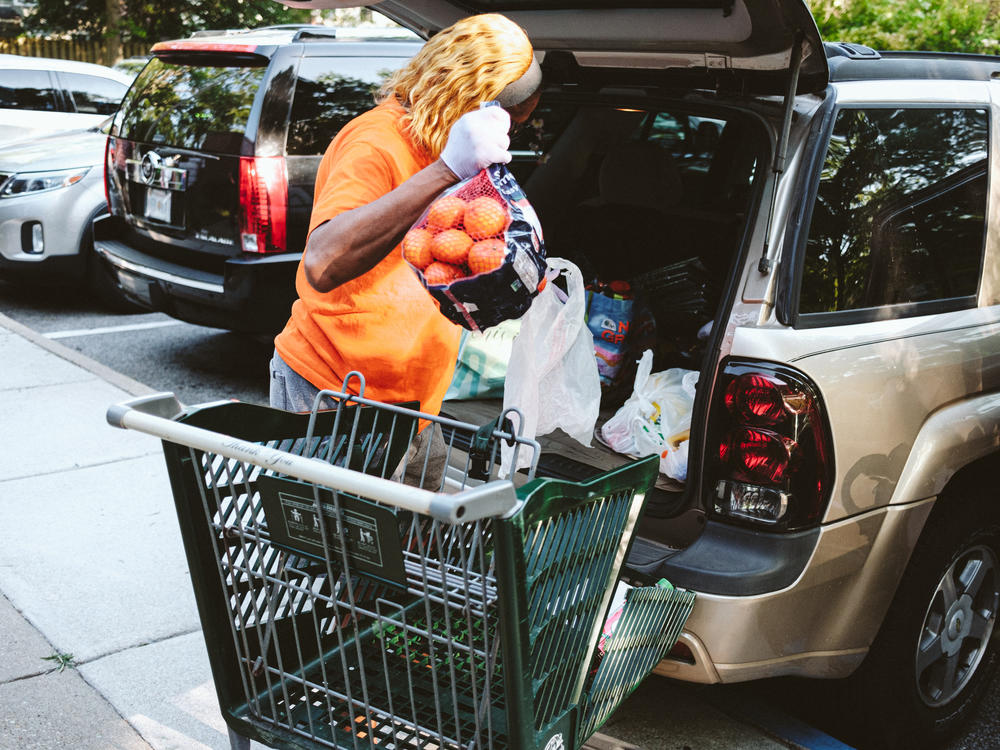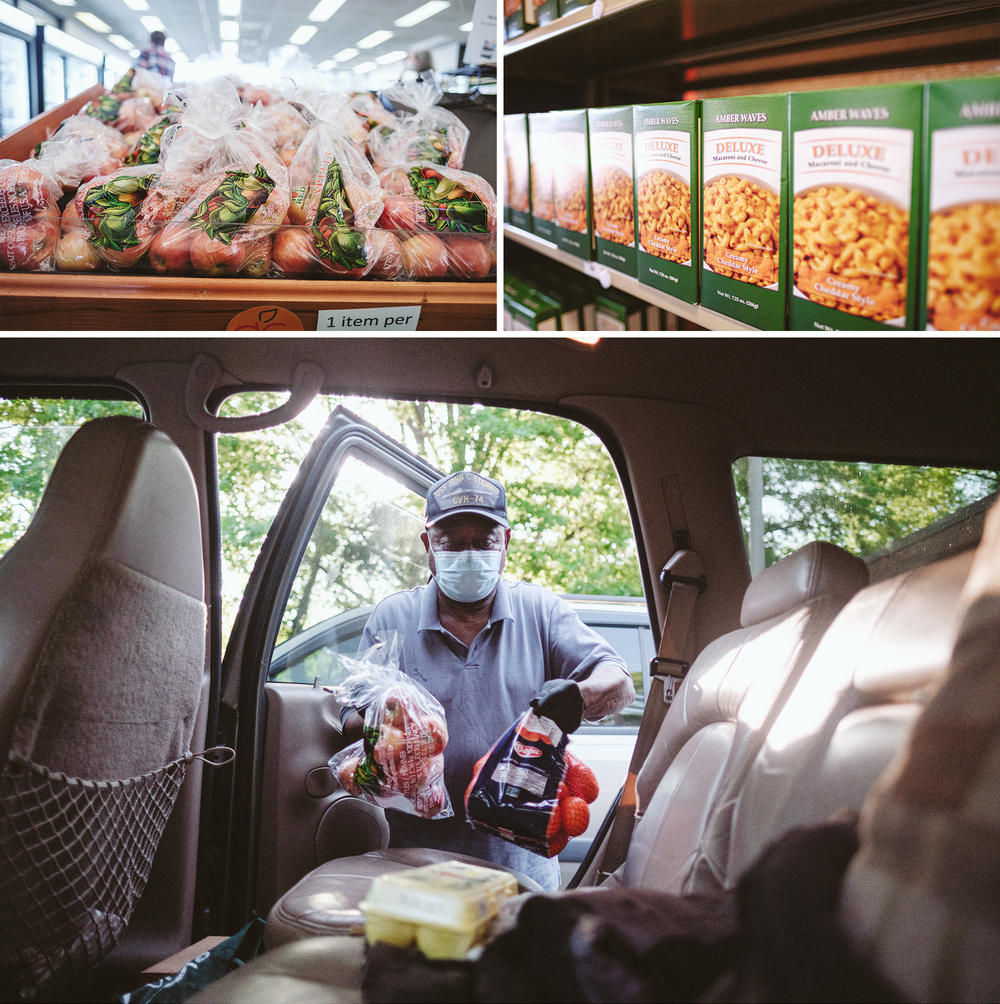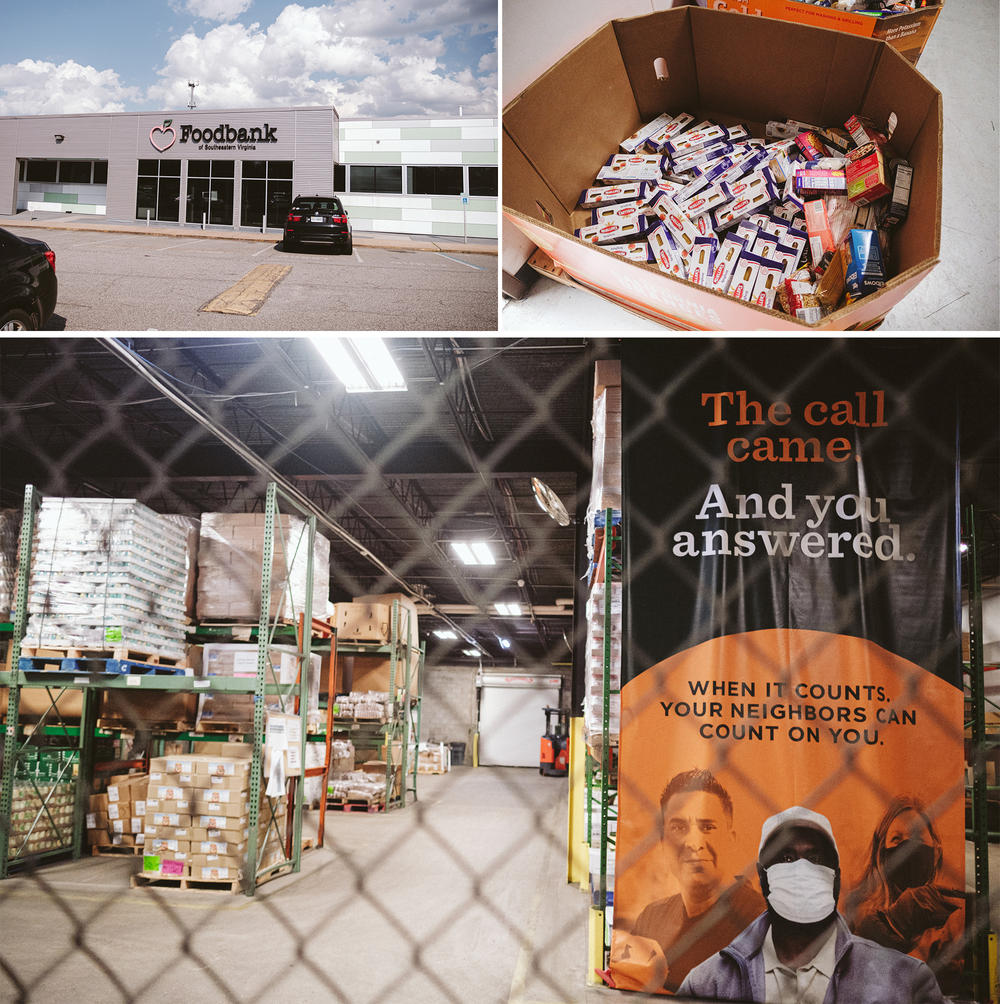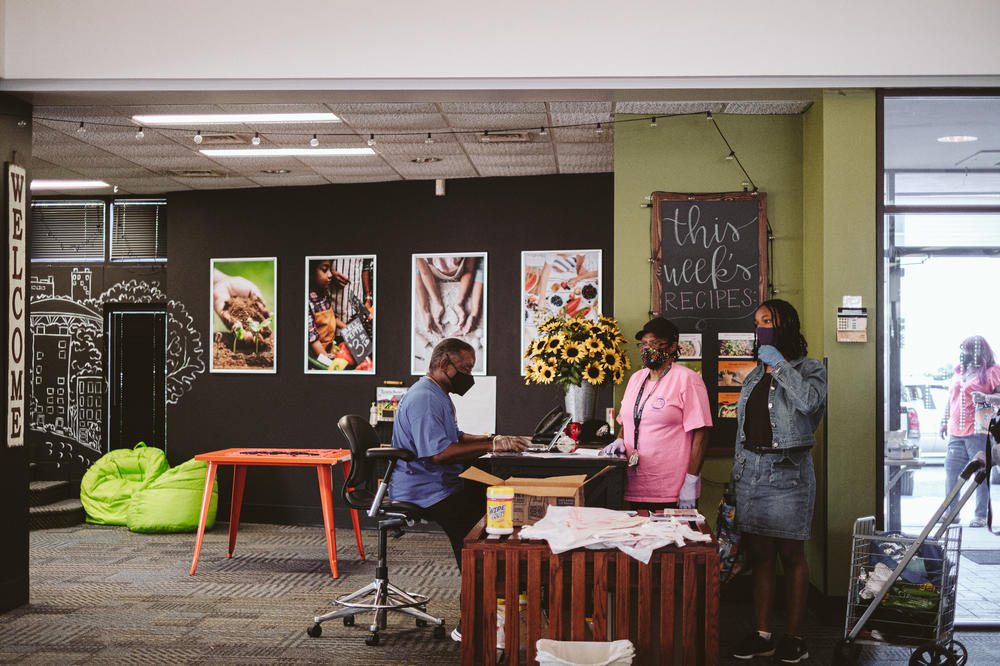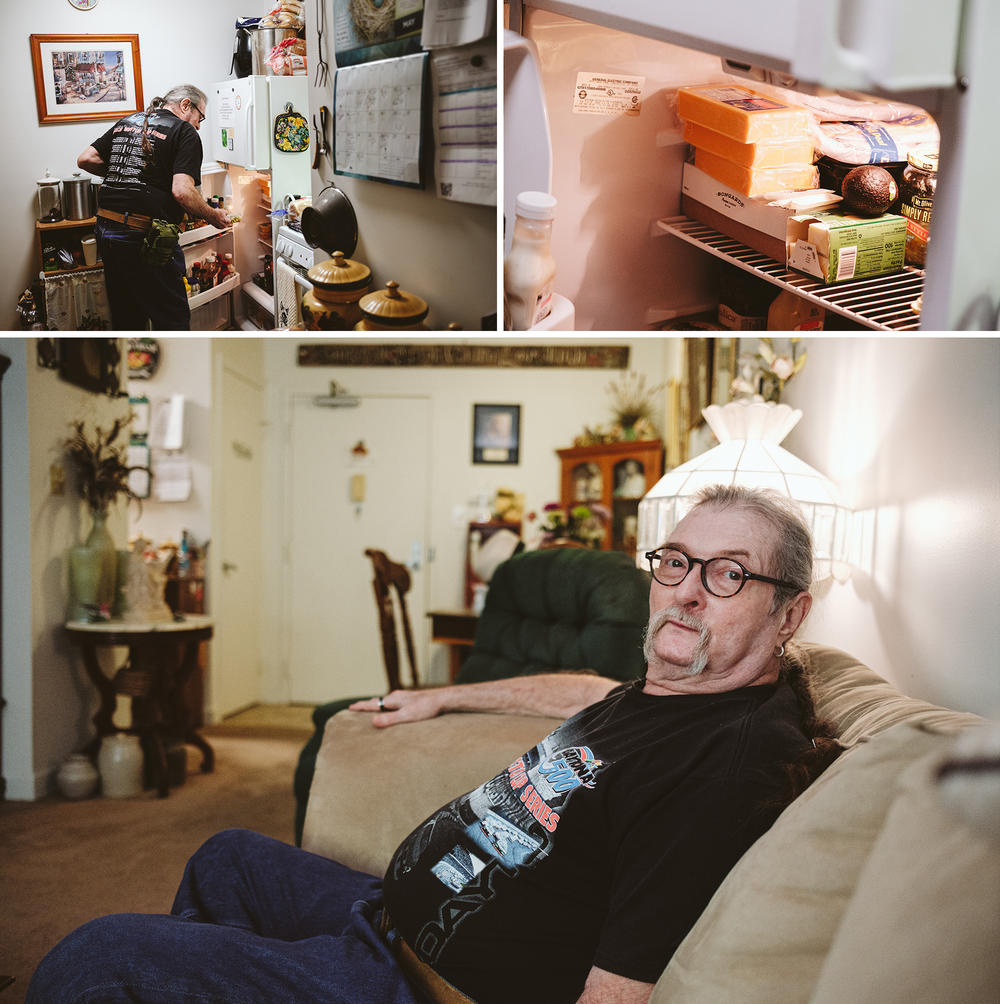Section Branding
Header Content
Demand at food banks is way up again. But inflation makes it harder to meet the need
Primary Content
NORFOLK, Virginia — On a sultry evening at a neighborhood food pantry in this waterfront city, some in the line outside have come from work. Justine Lee, a teller at a credit union, had never gone to a food bank until prices went crazy this year. Now, she says with a laugh, inflation means "a lot of fussing between mothers and daughters."
She wants to use the moment to teach her 11-year-old the value of money. But on a recent shopping trip, her daughter wanted only Doritos, not the cheaper store-brand chips. Lee also drives to work and says she didn't used to think twice about filling the gas tank, but "it was empty yesterday." She decided to keep driving to a place down the road she thought would be 5 or 10 cents cheaper. "And then I caught myself, 'Wow, am I really doing this?' "
Lee is part of a new surge of people showing up at food banks all over the U.S. this year, a "drumbeat of increasing demand, month over month," says Katie Fitzgerald, president of Feeding America. Food is one of the items worst hit by the highest inflation in four decades. And the cost of food and other essentials, such as gas and rent, fall hardest on lower-income households with little wiggle room.
At the Norfolk pantry, school bus driver Monique Wilson started coming a few months ago "just to supplement my food budget." She and her husband have cut back on eating out, and to save on gas she uses the car as little as possible, "trying to make one trip do for all and get as many stops in as I can."
Robert Walton is a regular here. He and his wife are retired but raising two grandkids. Inside the building, he grabs a shopping cart and picks out bags with applesauce, juice and sunflower seeds.
"Little snacks like this, that's what the kids like when they can get it," he says.
And he doesn't mean only his own. Walton says he visits several pantries and brings food for other children in his neighborhood. He says a lot of people who lost jobs in the pandemic are still not working, and he can tell that their kids are missing meals. "It's been bad."
Walton is grateful for the food here. But he and others say they have noticed some favorite items missing, and meat has been especially hard to come by. That's because even as demand surges, food banks are finding it tougher to meet the need.
Food banks are struggling to meet higher demand because of inflation and other problems
At the Foodbank of Southeastern Virginia and the Eastern Shore, President and CEO Christopher Tan shows off a cavernous storage room with empty spots on its shelves. "This would normally be much fuller," he says.
In part, that's because food donations are way down. He says grocery stores got more efficient with online orders during the pandemic, so they don't have as much extra to give. Plus, supply chain delays are disrupting the normal turnover cycle. Items that used to be delivered in a few weeks may not show up for months.
"Breakfast cereal, pasta, pasta sauce. These are things that are the staples of almost every food bank, right?" Tan says. "It's very difficult to find."
The delays are so bad that he recently ordered turkeys for Thanksgiving, to be sure they arrive in time.
Then there's the cost. With fewer donations, Tan must buy more food on the open market and at prices driven higher by inflation. A budget item that was a bit less than a million dollars before the pandemic will be nearly $5 million this year. What's more, his fuel budget has doubled, and Tan says he's competing with Amazon and rising wages, generally, for drivers. He's currently short five delivery truck drivers out of eight.
But he can't pass those costs on to customers as private businesses are doing. "We don't get to say, like, 'We're going to double the cost of our food,' " he says. "Because doubling the cost of our food is still zero."
Fitzgerald, of Feeding America, says providers around the country are dipping into emergency reserves, switching to cheaper products, limiting how often people can visit or how much food they can get, and "stretching their inventory to be able to meet more people's needs."
All this comes as emergency pandemic assistance for rent, child care and food has ended or will soon. Fitzgerald's group has asked Congress for another infusion of emergency spending to help its pantries and other programs buy food. On Wednesday, Agriculture Secretary Tom Vilsack announced $2 billion in new funding to strengthen food supply chains.
"Our experience is that this rise in food and fuel costs are creating just as precarious a situation for people who are trying to feed their families as was the case during the pandemic," Fitzgerald says.
America's charitable food system was designed for emergencies but has become a necessity
An Urban Institute survey found that 1 in 6 adults relied on charitable food, a share that was still above pre-pandemic levels. It found Black and Hispanic adults were nearly three times as likely as white adults to use food pantries, with no significant decline since the first year of the pandemic. And that data was from December, before inflation caused food prices to spike.
Additionally, though the overall economy may be booming, the unemployment rate for Black people is nearly double the national average.
Feeding America's Fitzgerald says low-income households feel rising prices the most because they spend a far greater share of their income on necessities. Food alone makes up nearly a third of their budget, on average.
But even beyond this crisis, Fitzgerald says persistent hunger has become a symptom of the country's wider inequality. For decades, wages have lagged — especially for those without a college degree — while costs for housing, health care and education have skyrocketed. The nation's charitable food system was not designed to compensate for such disparities.
"Thirty, 40 years ago, it was really an emergency food system for people who really had no other option," she says. "Today, we're seeing a lot of folks that are budgeting in charitable food to their monthly budget. And when that is happening in this country, something is fundamentally wrong, because a lot of these folks are working."
Everett Jones is retired after a career as a traveling stagehand. He and his wife live in a subsidized senior living apartment in Virginia Beach and get food stamps. And still, he says for years they have found food donations to be an "absolute necessity." Now, inflation is forcing painful choices.
"The gas prices are so high that I have to cancel doctor's appointments," he says. "They're too far away."
He has put off physical therapy for his bum knee, allergy shots, even a cardiology follow-up after he was hospitalized with a heart problem. Jones says he can hardly afford batteries for his hearing aids.
"It's a lot of stress, a lot of worry, a lot of self-denial of things that we should not have to deny ourselves."
Jones jokes he may get a horse and buggy to save on gas. But if prices stay this high for a lot longer, he doesn't know what else he'll be able to do without.
Copyright 2022 NPR. To see more, visit https://www.npr.org.
